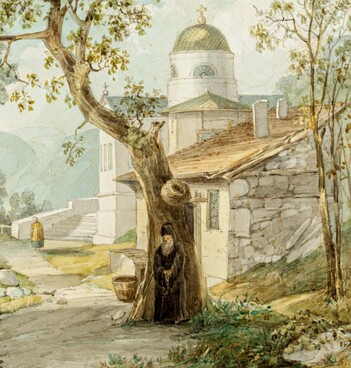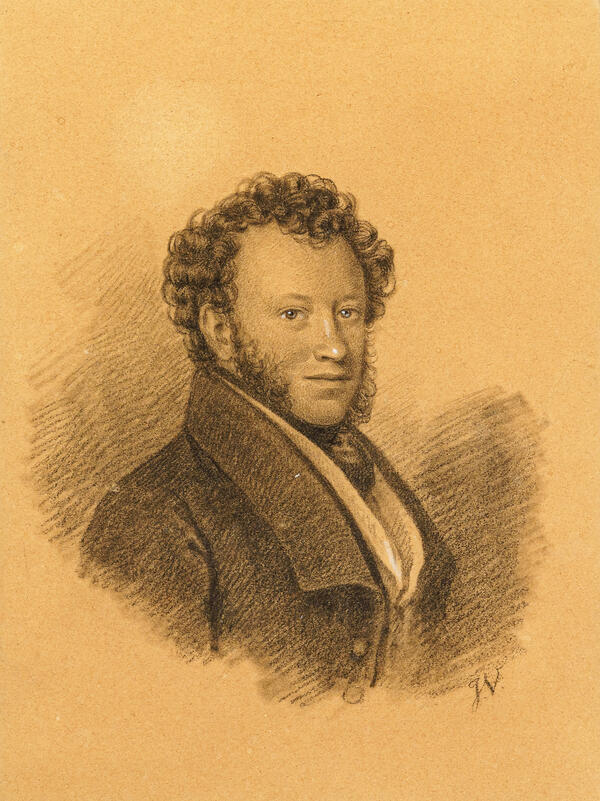He returned to Russia dressed to the nines, in the latest Parisian fashion. In Paris, Vasily Pushkin had time to visit Edme Quenedey’s studio and commission a portrait of himself using the physionotrace, which was then in fashion. The customer sat down for a few minutes in front of the physionotrace (a mechanical device for making profile portraits which uses a pantograph connected to a pencil) — the barely noticeable drawing that appeared was quickly completed and engraved on a copper plate (in total, no more than ten prints were made). Later, this portrait, which was redrawn and made into an engraving by Stepan Filippovich Galaktionov, was featured on the cover of the first collection of poems by Vasily Pushkin. After retiring, he settled in Moscow. There he was beloved by his peers, acted on the amateur stage and composed poetry.
In July 1811, leaving for St. Petersburg in the hope of publishing some of his poems, Vasily Pushkin took his nephew Alexander with him. The latter was assigned to the Tsarskoe Selo Lyceum. Then they parted ways for a long five years. In 1816, Vasily Pushkin again visited the Northern Capital and his nephew at the Lyceum. There he saw in him a huge change: a clumsy boy who eagerly listened to literary conversations and poems turned into a Poet. From that moment on, Vasily Pushkin admired Alexander and was rather surprised at the incomprehensible mystery of his genius.
Before Pushkin’s Southern Poems were published and
brought him great fame, the words “nephew of Vasily Lvovich” flashed in the
correspondence of their contemporaries. After 1822–1823, Vasily Pushkin was referred
to as “Pushkin’s uncle” .



